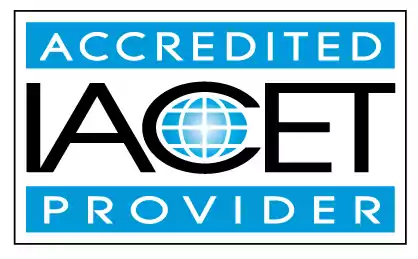Describe methods to appropriately share and protect information about children and families with other professionals.
Learn the methods to appropriately share and protect sensitive information about children and families in the workplace. Understand the components of professionalism, including the responsibilities of caregivers towards children, families, and coworkers. Explore essential knowledge for early childhood education and child care centers.Trainings incorporating this outcome
Proficiency Level
Target Audience
States
Alabama (3) Alaska (3) Alberta (3) Arizona (3) Arkansas (3) Australia (3) California (3) Colorado (3) Connecticut (3) Delaware (3) District of Columbia (3) Florida (3) Georgia (3) Hawaii (3) Idaho (3) Illinois (3) Indiana (3) Iowa (3) Jamaica (3) Kansas (3) Kentucky (3) Louisiana (3) Maine (3) Manitoba (3) Maryland (3) Massachusetts (3) Michigan (3) Minnesota (3) Mississippi (3) Missouri (3) Montana (3) Nebraska (3) Nevada (3) New Hampshire (3) New Jersey (3) New Mexico (3) New York (3) Newfoundland and Labrador (3) North Carolina (3) North Dakota (3) Nova Scotia (3) Ohio (3) Oklahoma (3) Ontario (3) Oregon (3) Pennsylvania (3) Prince Edward Island (3) Puerto Rico (3) Quebec (3) Rhode Island (3) Saskatchewan (3) South Carolina (3) South Dakota (3) Tennessee (3) Texas (3) Thailand (3) United Kingdom (3) Utah (3) Vermont (3) Virgin Islands (3) Virginia (3) Washington (3) West Virginia (3) Wisconsin (3) Wyoming (3)
120 hours courses
Related Outcomes
- Identify components of professionalism in the workplace, including caregivers’ professional responsibilities to children, families, and coworkers
- Describe the rights of children and families and their relation to home visiting.
- The childcare professional will demonstrate an understanding of the value and importance of complex characteristics of children’s families and communities
- Identify appropriate practices for identify and demonstrate an children: Define Developmentally Appropriate Practice
- Describe ways child care professionals can display leadership with families and the community.
- Identify appropriate practices for identify and demonstrate an children: Identify examples of appropriate activities for different ages
- Give examples of appropriate sensory activities for preschool-age children.
- Recognize the importance of providing activities that reflect a welcoming environment for all children, youth and families, regardless of culture, language, or religion, or strengths, talents, and abilities.
- Identify and contemplate bias and explore anti-bias approaches that support working with children and families.
- Describe the stages of grief and the different ways children react to grief and stress.
- Give examples of tools that record and communicate critical information to other staff and families.
- Describe the importance of monitoring the family child care environment for potential risks.
- Give examples of developmentally appropriate musical activities for children.
- Demonstrate an understanding of the value and importance of complex characteristics of children’s families and communities
- Define active play in the early childhood classroom and describe its benefits for young children.
- Demonstrate an understanding of appropriate supervision for all children’s activities.
- Identify appropriate supervision practices for children during transportation and field trips.
Related Articles
- How To Market Your Home Day Care
- Communication Skills in Child Care
- Mandatory Reporters
- Building Strong Partnerships: Effective Communication Between Teachers and Parents
- Managing Behaviors in the Early Childhood Education Classroom
- Harnessing Social Media for Childcare: Innovative Ways to Engage Parents
- Emergency Preparedness in Childcare: Creating and Practicing Safety Protocols
- You Won't Believe These 7 Must-Have Skills for Childcare Providers!
- Turn Your Home into a Thriving Family Childcare Business!
- Child Abuse and Neglect Training for Educators
- Child Abuse and Neglect Training: Empowering Educators to Recognize and Respond
- Prevent, Protect, Respond: Child Abuse and Neglect Training for Educators
- From Band-Aids to EpiPens: Medical Administration Training in ECE
- When Seconds Count: Mastering Emergency Preparedness
- 🧩 Early Signs of Autism in Toddlers — What to Watch For 👀
- 🗣️ How Can I Talk to Parents About Bullying Without Blame or Conflict?🤝
- 🌟 How Can You Protect Children’s Health and Happiness in Every Learning Environment?
- Family Engagement Strategies in Early Childhood Education
- Why Ongoing Professional Development Matters for Maryland Providers
 12 CEUs
12 CEUs